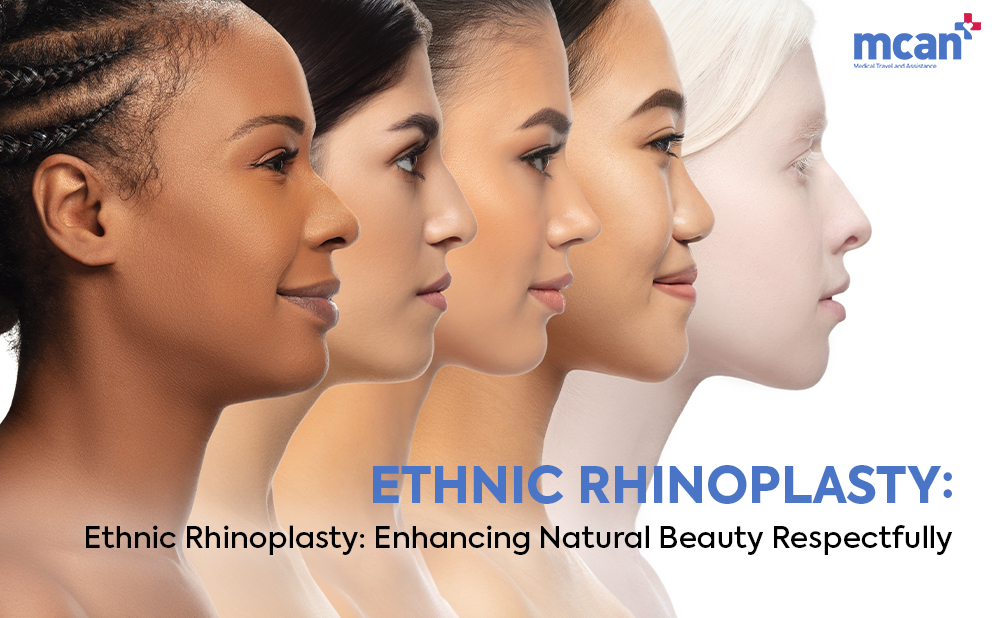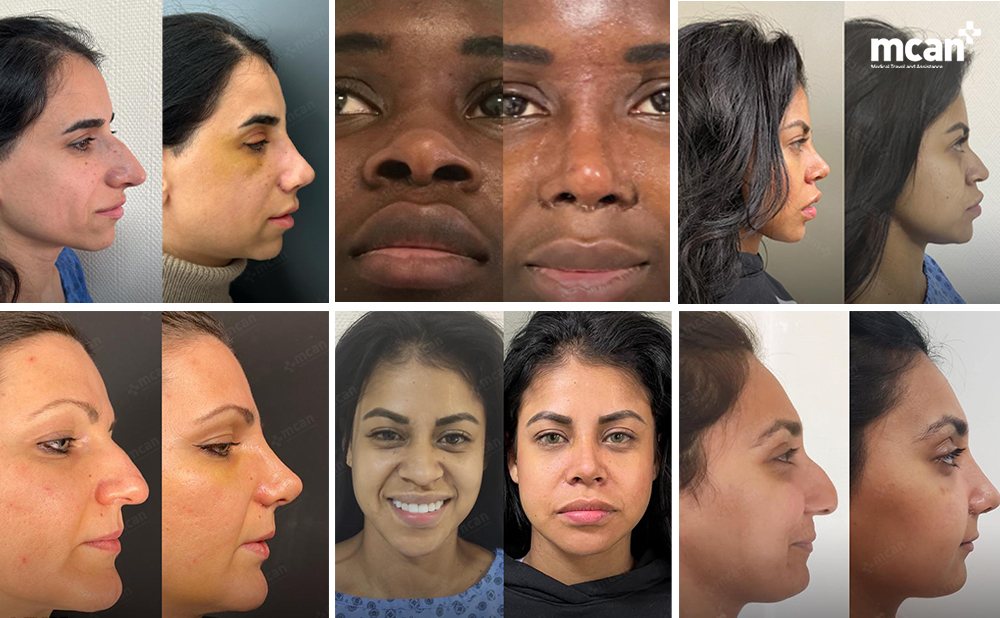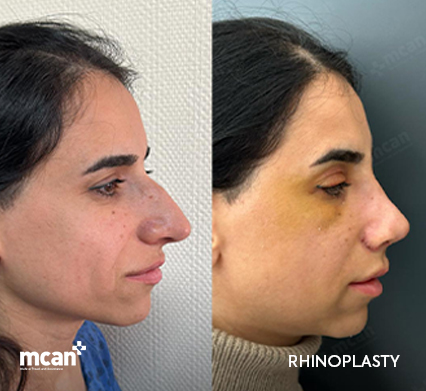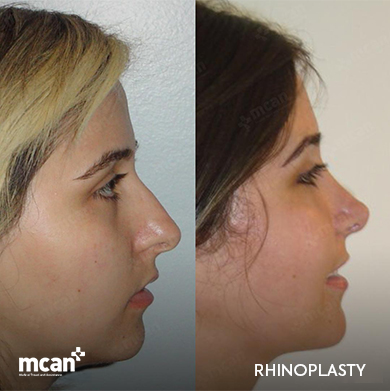
When it comes to rhinoplasty, the goal is rarely just to create a “perfect” nose. It’s to create your nose. For patients from diverse ethnic backgrounds, this means a result that reflects both personal beauty goals and the unique features that define their heritage.
Ethnic rhinoplasty is not about standardizing appearance. It’s about enhancing harmony while preserving identity. Instead of reshaping a nose to fit a single ideal, this specialized approach embraces the nuances of different facial structures and cultural aesthetics. The result? A nose that looks natural, balanced, and unmistakably yours.
Whether you’re considering nasal refinement, improved breathing, or subtle contouring, understanding the principles of ethnic rhinoplasty can empower you to make a confident, informed decision.
What Is Ethnic Rhinoplasty?
Ethnic rhinoplasty is a specialized form of nasal surgery tailored to individuals of non-Caucasian descent, including African, Asian, Middle Eastern, Hispanic, and other backgrounds. While traditional rhinoplasty often targets narrow bridges and refined tips, ethnic rhinoplasty takes a broader approach that respects unique anatomical and cultural differences.
Unlike standard rhinoplasty, this approach is not about making a nose “smaller” or more “Western.” Instead, it’s about bringing balance to the face while maintaining the natural characteristics that define your look. For many patients, that includes:
- Preserving a strong nasal bridge
- Subtle refinement of a wide or rounded tip
- Enhancing symmetry without sacrificing cultural identity
The best results don’t erase. They enhance what already makes you distinct.
By combining advanced surgical techniques with a deep understanding of facial diversity, ethnic rhinoplasty empowers patients to celebrate their heritage with confidence, not compromise it.

Common Goals and Challenges in Ethnic Rhinoplasty
Every rhinoplasty is personal, but ethnic rhinoplasty carries an additional layer of consideration by balancing aesthetic enhancement with cultural and anatomical preservation. Patients often come in with specific goals, but also concerns about losing the features that reflect their heritage.
Common Goals in Ethnic Rhinoplasty
While goals vary between individuals, many patients seeking ethnic rhinoplasty share similar aesthetic and functional aspirations. These typically revolve around achieving greater balance and definition while preserving the essence of their natural look.
- Tip refinement: Many patients seek a more defined nasal tip, especially if their natural structure is wide or bulbous.
- Bridge modification: This can include lowering a high dorsal hump or building up a low nasal bridge, depending on the patient’s ethnicity and preference.
- Nostril reshaping: Flared or wide nostrils may be narrowed slightly for improved balance, without over-correction.
- Improved breathing: Functional concerns, such as deviated septum or narrowed airways, are often addressed alongside cosmetic changes.
Challenges in Ethnic Rhinoplasty

Surgical refinement in ethnic noses often requires advanced expertise to overcome anatomical complexities while maintaining cultural authenticity. These challenges must be carefully managed to ensure both aesthetic and functional success.
- Thicker skin: Common in many ethnic groups, thicker skin can limit definition, especially at the tip, and requires expert-level structural support and patience during healing.
- Weaker cartilage: Some ethnic noses have softer or thinner cartilage, which may require reinforcement through grafting.
- Preserving ethnic identity: The most crucial challenge and advantage of ethnic rhinoplasty is understanding how to enhance the nose without erasing cultural traits. A nose that is too “refined” can look unnatural or out of place on a patient with strong ethnic features.
Key Ethnic Rhinoplasty Techniques


Ethnic rhinoplasty requires a customized approach. Techniques must be carefully chosen based on the individual’s anatomical structure and aesthetic goals. Below are some of the most effective strategies used in these cases:
- Structural grafting: Cartilage grafts, often from the septum, ear, or rib, help reinforce the nasal tip or bridge, especially when natural cartilage is weak or soft.
- Alar base reduction: A targeted technique to reduce nostril width while maintaining proportional harmony with the rest of the face.
- Tip support techniques: Suturing methods and shield grafts help define and project the nasal tip without over-narrowing.
- Bridge augmentation: For patients with low nasal bridges, augmentation can improve profile balance using cartilage or synthetic implants.
- Preservation of natural angles: Instead of westernizing features, ethnic rhinoplasty maintains culturally characteristic nasal angles and contours.
These structural techniques are further explored in our Thick Skin Rhinoplasty: A Structural Approach to Bulbous and Thick-Skinned Noses article, which details how reinforcement and careful planning are essential in achieving definition in thicker skin types.
Tailoring Techniques to Diverse Ethnic Backgrounds
Ethnic rhinoplasty surgeons must understand both structural variations and aesthetic ideals across different ethnic groups to create results that are balanced, beautiful, and authentic.
Below is an overview of how ethnic rhinoplasty techniques vary among different backgrounds:
| Ethnic Group | Common Anatomical Features | Surgical Considerations |
|---|---|---|
| African | Wide nasal base, thick skin, low nasal bridge, soft cartilage | Alar base reduction, tip definition with cartilage grafts, avoiding over-narrowing to preserve ethnic identity |
| Middle Eastern | High dorsal hump, strong bone structure, thick skin, droopy tip | Dorsal reduction, tip rotation/refinement, preserving facial balance with subtle contouring |
| Asian | Low nasal bridge, thick skin, small and weak cartilage structure | Bridge augmentation (often with grafts), minimal tip projection to enhance yet maintain natural proportions |
| Hispanic | Broad nasal base, mild to moderate hump, variable skin thickness | Dorsal refinement, tip support with grafts, nostril reshaping to balance width and projection |
A skilled ethnic rhinoplasty surgeon doesn’t just address these structural elements. They also consider the cultural aesthetics and beauty ideals important to the patient. For example, a slight increase in bridge height may be desirable for some Asian patients but avoided in others who prefer to maintain their soft profile. Similarly, nostril reshaping in African or Hispanic patients must be approached with care to avoid altering their cultural expression.
Ethnic rhinoplasty surgeons must understand both structural variations and aesthetic ideals across different ethnic groups to create results that are balanced, beautiful, and authentic. If you’re curious about how different nose types influence surgical techniques, our Types of Noses article explores these variations and their implications in greater detail.
Who’s a Good Candidate for Ethnic Rhinoplasty?
Since ethnic rhinoplasty is about enhancing what’s already there while preserving your cultural essence. The ideal candidate isn’t looking to erase their heritage but to refine features in a way that feels both natural and respectful.
You may be a strong candidate if you:
- Desire subtle refinement of features like a wide tip, low nasal bridge, or flared nostrils without losing your ethnic identity.
- Value facial harmony over conformity, seeking results that complement your unique bone structure and skin tone.
- Are in good physical health, with no underlying conditions that could impair healing.
- Understand that realistic expectations matter more than dramatic change because ethnic rhinoplasty is a nuanced art.
- Have functional concerns, such as breathing issues, that can be addressed in the same procedure for dual benefit.
- Are emotionally ready to embrace the change, knowing that the goal is enhancement, not reinvention.
For those unsure about whether they’re ready for surgery, our blog Do You Need a Nose Job? offers helpful guidance on identifying both aesthetic and functional motivations for rhinoplasty.
Ethnic Rhinoplasty vs. Standard Rhinoplasty: Key Differences
While the end goal of any rhinoplasty is to achieve facial harmony and patient satisfaction, the pathway differs significantly when treating ethnically diverse noses. Ethnic rhinoplasty requires an approach that’s both structurally informed and aesthetically respectful.
Key distinctions between the two rhinoplasty approaches are as follows:
| Aspect | Ethnic Rhinoplasty | Standard Rhinoplasty |
|---|---|---|
| Anatomical Approach | Focuses on preserving and supporting thicker skin, softer cartilage, and wider nasal bases | Often works with thinner skin and more defined cartilage structures |
| Surgical Techniques | Commonly involves cartilage grafts and internal structural support | May not require extensive reinforcement |
| Aesthetic Goals | Aims for enhancement while maintaining ethnic characteristics | Often targets narrow, angular nasal shapes aligned with Western ideals |
| Incision Planning | Tailored for optimal healing in thicker or more pigmented skin types | Typically based on standard techniques and scarring tendencies |
| Philosophy | Emphasizes individual identity, cultural harmony, and personal goals | Frequently oriented around a generalized aesthetic preference |
Ethnic Rhinoplasty in Turkey with MCAN Health

Choosing the right clinic goes beyond surgical skill is all about partnering with a team that honors your cultural identity, personal vision, and long‑term wellness. At MCAN Health, every nose is approached as a unique canvas tailored to reflect who you are, not who you’re not.
Whether you’re looking to refine a wide tip, enhance a low bridge, or balance nostrils, our work is always guided by deep respect for your individual heritage and aesthetic goals. Our board‑certified surgeons are well-versed in working with diverse features, from African and Middle Eastern to Asian and Hispanic anatomies, by using techniques specifically suited to each background.
What makes MCAN Health stand out:
- All‑inclusive ethnic rhinoplasty packages, covering surgery, transfer service, accommodation, and dedicated nurse support
- Procedures performed in TEMOS‑accredited hospitals featuring cutting‑edge surgical technology
- Multilingual patient liaisons and hosts who understand your language, culture, and preferences
- UK‑based aftercare office for seamless follow‑up once you return home
Beyond the operating room, our MCANSupport™ ecosystem ensures your healing journey is well‑supported:
- MCANCare™: A nurse‑led recovery system that includes hospital and in‑hotel care, guidance, regular check‑ins, and emotional support
- MCANFollow™: A year‑long post‑op program offering remote follow‑up, guidance, and expert advice even after you return home
- MCANAssurance™: Coverage and assistance for any necessary revisions or complication‑related care after surgery
With MCAN Health, ethnic rhinoplasty in Turkey becomes a true transformation that is rooted in expertise, cultural sensitivity, and unwavering support at every step.
 MCAN Health Trademark Application is Approved By Turkish Patent Institute
MCAN Health Trademark Application is Approved By Turkish Patent Institute  How to Thicken Hair? Shake up Your Routine!
How to Thicken Hair? Shake up Your Routine!  Is a Facelift the Right Choice for You? Key Signs to Consider & Questions Answered
Is a Facelift the Right Choice for You? Key Signs to Consider & Questions Answered